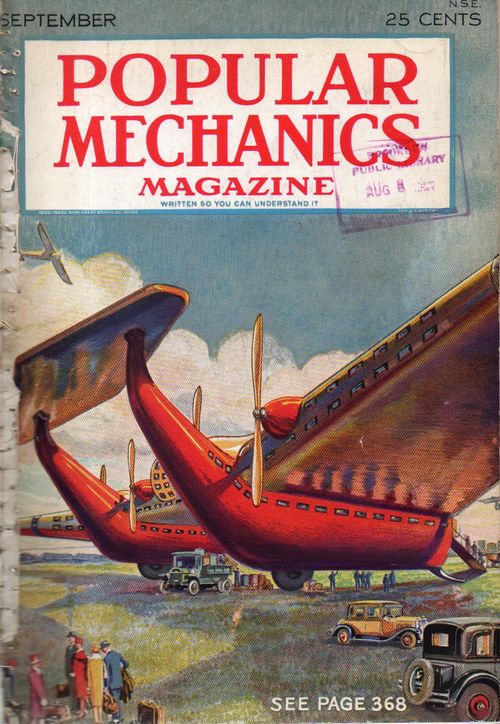JF Ptak Science Books Quick Post
The beautiful aircraft was being built primarily on high hopes and a sleepless night, but that's okay. This was a vision for a transatlantic aircraft, and appeared int he September 1927 issue of Popular Mechanics, and was an interesting and in some ways remarkable insight to the coming prospects of long-distance passenger flight. The Wright flight was only 24 years before this, and the Lindbergh solo crossing of the Atlantic occurred just a few months prior to this publication, an event which no doubt added fire to the speculation of future transatlantic flights. The artist imagines a massive aircraft with a 400' wingspan, the wings offering room enough for sleeping quarters for the passengers. The Transatlatic flight was technically difficult, and outside of crossings by the Graf Zeppelin and the Hindenburg in the late 1920's, passenger service really wasn't instituted on any large scale until after WWII. There were crossings by aircraft in the early 1930's, but there (as with the famous flight by Dornier in the DO-X seaplane in 1931) the majority of those flights were over the ocean to South America, and then continued to North America. A notable exception is the Yankee Clipper. which was a luxury flight (carrying 74 and sleeping 36) and which was a massive aircraft, though the real plane's wingspan was less than half (at 150') of the visioneered aircraft below. In any event, recognition is in order to the designer who thought about flight in this manner just 10 weeks1 after Charles Lindbergh made his NYC-Paris flight.
A newsreel of the parade held in Lindbergh's honor in NYC on June 13, 1927 showing the enormous reception of the new world-wide hero:
Notes:
1. The September issue of Popular Mechanics would have been issued in early August (as we can see in the stamp on the cover, this issue being received by the Brooklyn Public Library August 8.




Comments